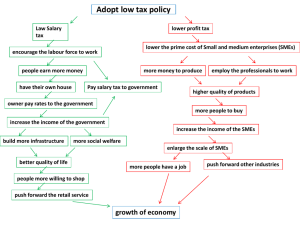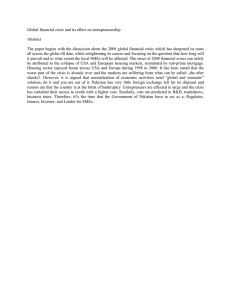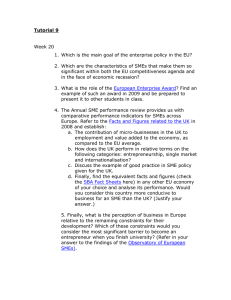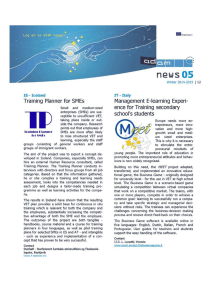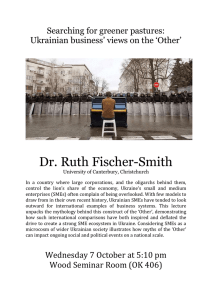Energy Storage Methods - Superconducting Magnetic Energy
advertisement
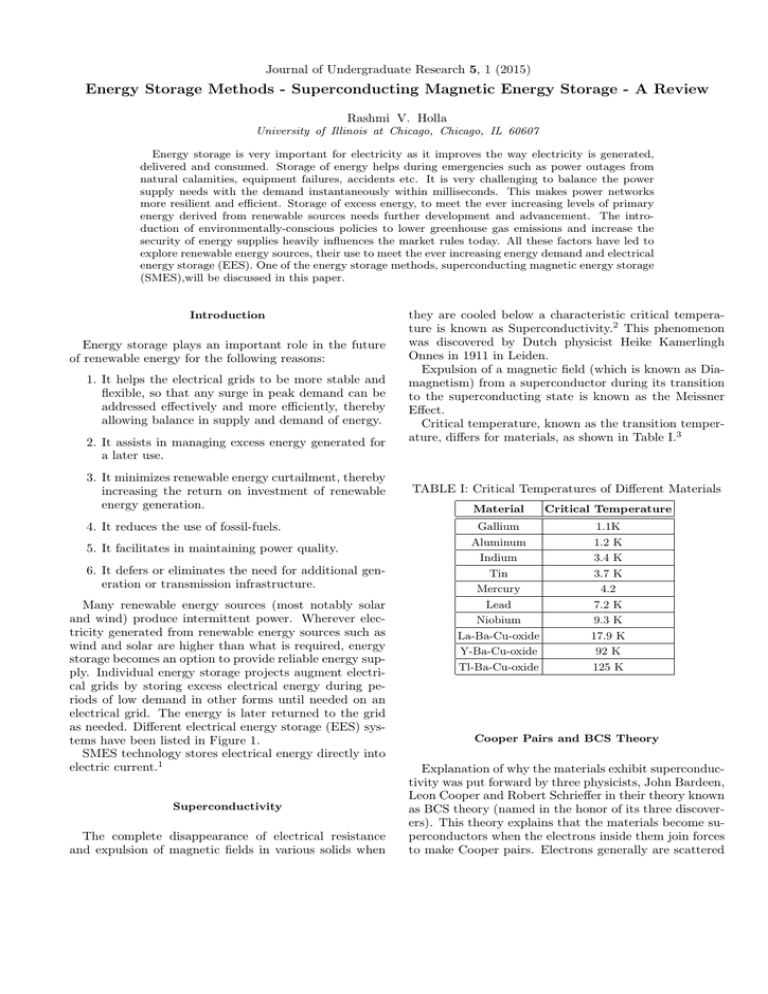
Journal of Undergraduate Research 5, 1 (2015) Energy Storage Methods - Superconducting Magnetic Energy Storage - A Review Rashmi V. Holla University of Illinois at Chicago, Chicago, IL 60607 Energy storage is very important for electricity as it improves the way electricity is generated, delivered and consumed. Storage of energy helps during emergencies such as power outages from natural calamities, equipment failures, accidents etc. It is very challenging to balance the power supply needs with the demand instantaneously within milliseconds. This makes power networks more resilient and efficient. Storage of excess energy, to meet the ever increasing levels of primary energy derived from renewable sources needs further development and advancement. The introduction of environmentally-conscious policies to lower greenhouse gas emissions and increase the security of energy supplies heavily influences the market rules today. All these factors have led to explore renewable energy sources, their use to meet the ever increasing energy demand and electrical energy storage (EES). One of the energy storage methods, superconducting magnetic energy storage (SMES),will be discussed in this paper. Introduction Energy storage plays an important role in the future of renewable energy for the following reasons: 1. It helps the electrical grids to be more stable and flexible, so that any surge in peak demand can be addressed effectively and more efficiently, thereby allowing balance in supply and demand of energy. 2. It assists in managing excess energy generated for a later use. 3. It minimizes renewable energy curtailment, thereby increasing the return on investment of renewable energy generation. 4. It reduces the use of fossil-fuels. 5. It facilitates in maintaining power quality. 6. It defers or eliminates the need for additional generation or transmission infrastructure. Many renewable energy sources (most notably solar and wind) produce intermittent power. Wherever electricity generated from renewable energy sources such as wind and solar are higher than what is required, energy storage becomes an option to provide reliable energy supply. Individual energy storage projects augment electrical grids by storing excess electrical energy during periods of low demand in other forms until needed on an electrical grid. The energy is later returned to the grid as needed. Different electrical energy storage (EES) systems have been listed in Figure 1. SMES technology stores electrical energy directly into electric current.1 Superconductivity The complete disappearance of electrical resistance and expulsion of magnetic fields in various solids when they are cooled below a characteristic critical temperature is known as Superconductivity.2 This phenomenon was discovered by Dutch physicist Heike Kamerlingh Onnes in 1911 in Leiden. Expulsion of a magnetic field (which is known as Diamagnetism) from a superconductor during its transition to the superconducting state is known as the Meissner Effect. Critical temperature, known as the transition temperature, differs for materials, as shown in Table I.3 TABLE I: Critical Temperatures of Different Materials Material Critical Temperature Gallium Aluminum Indium Tin Mercury Lead Niobium La-Ba-Cu-oxide Y-Ba-Cu-oxide Tl-Ba-Cu-oxide 1.1K 1.2 K 3.4 K 3.7 K 4.2 7.2 K 9.3 K 17.9 K 92 K 125 K Cooper Pairs and BCS Theory Explanation of why the materials exhibit superconductivity was put forward by three physicists, John Bardeen, Leon Cooper and Robert Schrieffer in their theory known as BCS theory (named in the honor of its three discoverers). This theory explains that the materials become superconductors when the electrons inside them join forces to make Cooper pairs. Electrons generally are scattered Journal of Undergraduate Research 5, 1 (2015) minium, Tin, Lead, Mercury, Uranium, Zinc, Cadmium, Titanium, Gallium, Indium etc. Type II Superconductors They are made from alloys or complex oxide ceramics. High temperature superconductors are Type II superconductors. Besides being mechanically harder than Type I superconductors, they exhibit higher critical magnetic fields. They usually exist in a mixed state of normal and superconducting regions. This is called the vortex state, because filaments or cores of normal material are surrounded by vortices of superconducting currents. In this state, they exhibit incomplete Meissner effects. Examples of Type II superconductors: Niobiumtitanium (NbTi), Niobium-nitride (NbN), Niobium-tin (Nb3 Sn), Vanadium silicide (V3 Si) etc. B. Superconductors are classified based on critical temperature into Low temperature and high temperature superconductors. Low Temperature Superconductors It was assumed that the superconductivity could occur only at low temperatures.Ordinary or metallic superconductors have transition temperatures below 20K (-253.15 ◦ C / -423.67 ◦ F).Electric currents encounter no resistance, so they can cycle through the coil of superconducting wire forever without losing energy. FIG. 1: Different Types of Energy Storage High Temperature Superconductors due to the impurities, defects and vibrations of the material crystal lattice. All of these cause resistance to the flow of electricity. But at low temperatures, when the electrons pair up, they can freely move without being scattered, thus causing no resistance to the flow of electricity.4 However, in 1986, German physicist J. Georg Bednorz and Swiss physicist K. Alex Muller, discovered a ceramic cuprate (a material containing copper and oxygen) that could become a superconductor at transition temperature of around 30 K in LaBaCuO4 . They have been awarded Nobel Prize for their discovery.Even though they have been discovered more than 25 years ago, very little is known about their mechanism. Several Iron based compounds are now known to be superconducting at high temperatures.5–7 High temperature superconductors are preferred for certain SMES (such as one used in Brookhaven) as the magnetic field H can be greater, and the energy stored in SMES is proportional to the square of the field (H2 ). There is widespread use of superconducting materials for various purposes including medical magnetic-imaging devices, magnetic energy-storage systems, motors, generators, transformers, computer parts, and very sensitive devices for measuring magnetic fields, voltages, or currents. Classification of Superconductors A. Superconductors are classified based on response to a magnetic field into Type I and Type II superconductors. Type I Superconductors They are mainly metals or metalloids that display superconductivity.Identifying characteristics for this type are zero electrical resistivity below a critical temperature, zero internal magnetic field (Meissner effect), and a critical magnetic field above which superconductivity ceases. Examples of Type I Superconductors: Alu50 c 2015 University of Illinois at Chicago Journal of Undergraduate Research 5, 1 (2015) History of SMES The initial proposal for SMES was introduced by Ferrier M. in 1969 in France. In 1971, the University of Wisconsin launched research in U.S., which led to the construction of the first SMES device. Following this production SMES developed rapidly, where many companies established SMES systems, including Hitachi (1986), Wisconsin Public Service Corporation (2000), ACCEL Instruments GmbH( 2005) and many others. Over 100 MW of SMES units are now in operation worldwide, though the deployment of SMES has been slow for the last two decades due to its limitations. FIG. 2: SMES System Advantages of SMES Superconducting Magnetic Energy Storage (SMES) It is important to note some of the features of SMES systems. Refer to Table II8 for the characteristics of SMES.These features make SMES suitable for use in solving voltage stability and power quality problems for large industrial customers. These systems store energy in a magnetic field created by the flow of direct current in a superconducting coil which has been cryogenically cooled to a temperature below its superconducting critical temperature. To maintain the inductor in its superconducting state, the coil is immersed in liquid helium contained in a cryostat that is vacuum-insulated. Usually, the conductor is made of niobium-titanium, and the coolant is liquid helium at 4.2 K, or super fluid helium at 1.8 K. (Super fluidity is the state in which matter behaves as a fluid with no viscosity. In that state, matter self-propels and travels against the forces of gravity and surface tension. This phenomenon was initially discovered in liquid helium.) The SMES system comprises three major components, as shown in Figure 2, a superconducting unit (coil), a cryostat system (acryogenic refrigerator and a vacuuminsulated vessel),and a power conversion system.Current in the coil will not decay, once the superconducting coil is charged and the magnetic energy can be stored for indefinite time. The stored energy can be released back to the network once the coil is discharged. The power switching and conditioning system uses an inverter/rectifier to transform alternating current (AC) power to direct current (DC) or convert DC back to AC power. The inverter (also known as rectifier) accounts for about 23% energy loss in each charging and discharging cycle. The energy stored in the SMES coil can be calculated by E = 0.5 · LI 2 , TABLE II: SMES significant characteristics Property / Parameter Value Specific energy Energy density Specific power Power Density Charge/discharge efficiency Self-discharge rate 0.5 - 5 Wh/kg 0.2 2.5 Wh / L 500 2000 W/kg 1000 4000 W/L 95% 0% at 4 K 100% at 140 K Unlimited cycles ms to 8 s $ 1000-10000 /kWh Cycle durability Discharge time Energy Cost It is important to take a look at why SMES developed so quickly in such a short amount of time. SMES systems have notable advantages, including: 1. SMES shows a very high energy storage efficiency (typically > 97%). 2. SMES has very high power density. (1) 3. Rapid response: The time delay during charge and discharge is quite short, often in ms to 8 s. See Figure 4 to demonstrate discharge time for various storage systems.9 Power is available almost instantaneously and very high power output can be provided for a brief period of time. Thus if a customer’s demand is immediate, SMES is the suitable option. where, E is the energy measured in Joules, L is the inductance of the coil measured in Henry and I is the current passing through it, measured in Ampere. For high temperature superconductors, the coolant used is liquid nitrogen, which is much cheaper and easier to handle than liquid helium. 51 c 2015 University of Illinois at Chicago Journal of Undergraduate Research 5, 1 (2015) 4. The loss of energy in a charge-discharge cycle is less than other storage methods because electric currents encounter almost no resistance and is greater than 95%.1 Round trip efficiency refers to the energy that is not lost. Hence,Round trip efficiency of SMES is high due to low losses. 5. SMES has a high cycle life and, as a result, is suitable for applications that require constant, full cycling and a continuous mode of operation. 6. Main parts in a SMES are motionless, which results in high reliability, as any loss due to friction is avoided. FIG. 3: Grid Storage Technology Maturity 7. The energy output of an SMES system is less dependent on the discharge rate, compared to batteries. 8. It improves power quality for critical loads and provides carryover energy during momentary voltage sags and power outages.10 9. It does not rely on a chemical reaction and no toxins are produced in the process.10 10. Ultra-high field operation enables both short and long-term storage SMES systems in a compact device with cost advantages in material and system.10 11. SMES systems withsuper-fast response are used for power qualities such as instantaneous voltage drop, flicker mitigation and short duration of UPS. Power rating for such systems is generally lower than 1 MW.10 Applications of SMES:11 FIG. 4: Graphical representation to demonstrate discharge time for various storage systems. Adapted from Reference 9 1. They are used in UPS, where the power quality and response time required are very high. 2. They are used in Flexible AC Transmission systems (FACTS). Technical Challenges 3. They are used in Pulse power source such as in Electromagnetic launcher, magnetic forming. Although SMES systems have considerable advantages when it comes to response time and negligible loss of power, they also face some unique challenges. Technical Comparison of Electrical Energy Storage (EES) Methods 1. Energy storage and power are considered to be important criteria for an energy storage device. The energy is given by the product of the mean power and the discharging time. Energy storage is dependent on mean power and discharging time. Refer Figure 4 for comparison of System power rating of various EES plotted against their discharge time. These two quantities depend on application. Technological maturity of various energy storage systems is shown in 3. SMES system is developed and currently being demonstrated. These systems are commercially available, however, their reliability is yet to be established. Technical comparisons of various EES systems based on Discharge Time, Power rating, Storage duration, capital cost, cycle efficiency, energy & power density , Life time and cycle life are shown in Figure ??, as previously reported by Chen et l.8 . 2. Shorter discharging times (milliseconds to seconds) is desirable to protect an electric load from voltage sags. SMES are referred in such conditions.In a 52 c 2015 University of Illinois at Chicago Journal of Undergraduate Research 5, 1 (2015) power grid for leveling of load, the discharging time should be large (hours to weeks). SMES does not have larger discharging time. An important project to improve the application of SMES at Grid level is being sponsored by U.S Department of Energy (DOE), under Advanced Research Projects Agency for Energy (ARPA-E). They aim to develop 1-2 MWh commercial scale SMES systemthat is cost competitive with lead acid batteries.11 Team: Brookhaven National Laboratory, University of Houston, ABB and SuperPower.12 $5.3 M, out of which $4.2 M from DOE.12 A 30 MJ (8.4 kWh) SMES unit with a 10 MW converter has been installed and commissioned at the Bonneville Power Administration (BPA) substation in Tacoma, Washington. This system, which is capable of absorbing and releasing up to 10 MJ of energy at a frequency of 0.35 Hz.13 In 2000, in order to enhance the grid stability, American Superconductor Company installed six SMES unitsin the grid in northern Wisconsin, USA.7,14 To provide high quality power for a synchrotron source, 1.4 MVA/2.4 MJ SMES was installed at Brookhaven National Laboratory (USA).15 In North Carolina, Owens Cornings extrusion and production lines have been protected by SMES from voltage sags.16 In South Africa, a SMES has protected a paper machine against 72 voltage dips in 11 months.17 In Japan, to compensate the voltage dips in a liquid crystal manufacturing facility, a 5 MW 7 MJ SMES was installed in 2003.18 3. SMES have low energy density. This area requires more research and development to make SMES systems competitive. 4. The energy content of current SMES systems is very small. Methods to increase the quantity of energy stored in SMES often resort to large-scale storage units. 5. It is necessary to have a cryogenic system and power cost required to maintain lower temperatures are high. 6. A robust mechanical structure is usually required to contain the very large Lorentz forces generated by and on the magnet coils, without any degradation of superconducting properties. (Lorentz Force is the combination of electric and magnetic force on a point charge due to electromagnetic fields.) 7. The substantial cost for SMES is its superconductor, associated cooling system and the mechanical structure. 8. Existing and continued development of adequate technologies using normal conductors. 9. Health issues associated with strong magnetic field.Exposures to higher magnetic field often result in increased heat beat, changes in brain activities, effect on immune system, accelerated tumor growth, skin problems etc. However, full life cycle analysis for SMES systems is yet to be done for the concluding the harmful effects. Conclusion By 2020, the current demand for energy is expected to more than double globally. It would be a challenge to meet the future demand with the existing power generation capacity. Energy storage will help to maintain a backup to cater to the high future demand. With many EES systems commercially available today, energy storage industry face many challenges such as price arbitrage, energy balancing, transmission and distribution. Existing SMES Projects SMES systems have been deployed all over the world and are functional. Some of them have been listed as follows. 1 2 3 4 5 6 K. Cheung, S. Cheung, and S. N., Tech. Rep., Imperial College London (2007), http://www.homes.doc.ic. ac.uk/~matti/ise2grp/energystorage_report/. http://www.britannica.com/EBchecked/topic/574212/ superconductivity. http://hyperphysics.phy-astr.gsu.edu/hbase/ solids/scond.html#c2. http://www.explainthatstuff.com/superconductors. html. J. Timmer, Ars Technica (2012). Z.-A. Ren, G.-C. Che, X.-L. Dong, J. Yang, W. Lu, W. Yi, X.-L. Shen, Z.-C. Li, L.-L. Sun, F. Zhou, et al., EPL (Eu- 7 8 9 10 11 12 53 rophysics Letters) 83, 17002 (2008). C. Q. Choi, Scientific American 298, 25 (2008). H. Chen, T. N. Cong, W. Yang, C. Tan, Y. Li, and Y. Ding, Progress in Natural Science 19, 291 (2009). G. Crabtree and J. Misevich, Tech. Rep., American Physicl Society (2010). http://www.superpower-inc.com/content/ superconducting-magnetic-energy-storage-smes. P. Tixador, IEEE/CSC & ESAS EUROPEAN SUPERCONDUCTIVITY NEWS FORUM 3, 1 (2008). http://mydocs.epri.com/docs/ publicmeetingmaterials/1110/7TNRSL46577/ c 2015 University of Illinois at Chicago Journal of Undergraduate Research 5, 1 (2015) 13 14 15 16 17 18 12-SuperconductingMagneticEnergyStoragesystemforGRIDS(LehnerforLi) .pdf. H. J. Boenig and J. F. Hauer, Ieee Transactions on Power Apparatus and Systems 104, 302 (1985). T. Abel, Modern power systems 19, 28 (1999). J. Cerulli, in Power Engineering Society 1999 Winter Meeting, IEEE (1999), vol. 2, pp. 1247–1252. J. Cerulli, G. Melotte, and S. Peele, in Power Engineering Society Summer Meeting, 1999. IEEE (1999), vol. 1, pp. 524–528. R. Schottler and R. Coney, Power Engineering Journal 13, 149 (1999). S. Nagaya, N. Hirano, M. Kondo, T. Tanaka, H. Nakabayashi, K. Shikimachi, S. Hanai, J. Inagaki, S. Ioka, and S. Kawashima, Ieee Transactions on Applied Superconductivity 14, 699 (2004). 54 c 2015 University of Illinois at Chicago
